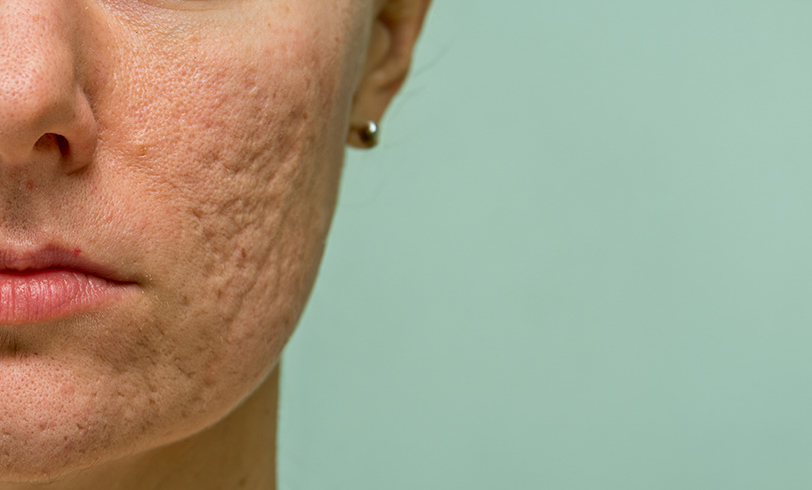

Acne Scars
Types, Diagnosis & Correction OptionsAcne scars can be a lasting reminder of past breakouts, affecting both your appearance and confidence. At Oliva Clinic, we specialise in advanced medical treatments to effectively minimise the appearance of these scars. Our expert team employs state-of-the-art treatments like laser therapy, microneedling, and advanced chemical peels, each designed to target different types of scars and promote your skin’s natural healing. Discover our innovative solutions tailored to your specific needs and take the first step towards clearer, smoother skin.
What Are Acne Scars And Why Do They Form?
Acne scars are marks or depressions that appear after breakouts subside. Acne occurs when a build-up of excessive sebum, dead cells and bacteria clog the skin pores and cause inflammation. Mild acne may lead to post-inflammatory hyperpigmentation or pimple marks. However, deeper lesions cause collagen damage that adversely affects the texture of the skin and results in permanent acne scars.
Since pimples affect 90% of the teenagers, acne scar is a common skin concern that requires medical attention. However, to minimise your acne scars, it is essential first to manage your pimples effectively. Let us find out the primary causes of acne scars before exploring its types and treatments.
Types Of Acne Scars
Ice pick scars
Ice pick scars refer to narrow and vertical acne scars that have sharp margins and a diameter of less than 2mm.
Rolling scars
Rolling scars are skin pits that have a diameter of up to 5mm, an undulating appearance and round margins.
Boxcar scars
Boxcar scars are more extensive than rolling scars with defined margins and a width ranging from 1.5mm to 4mm.
Causes of Acne Scars
Any grade or severity of acne can result in scars based on the healing response of the skin. However, you may be at a higher risk of developing acne scars if:
-
Picking or squeezing acne
You picked, popped or squeezed the acne.
-
Severe Acne Breakouts
You are having severe breakouts that comprise of cysts and nodules.
-
Delayed Treatment
You delayed the treatment response to a bout of inflammatory acne.
-
Family History
You have a family history of acne and acne scars.
Symptoms and Types
Here are the signs and symptoms of acne scars that may commonly appear on your face, chest and back if you are prone to having pimples
Common Types
Deep pits on the skin
Raised lesions on the skin
Dark pigmentary marks that occur after acne subsides.
Diagnosis
During an exclusive consultation with our dermatologist, they will quickly diagnose scarring due to acne during a physical examination. They can identify the grade of acne scars, whether mild, moderate, or severe. Accordingly, they will recommend a suitable treatment plan customised to your needs.
One-on-one Consultation
During an exclusive consultation with our dermatologist, they will quickly diagnose scarring due to acne during a physical examination.
Evaluate
They can identify the grade of acne scars, whether mild, moderate, or severe.
Customised Treatment
Accordingly, they will recommend a suitable treatment plan customised to your needs.
Are you at Risk?
-
Acne is the primary cause of scarring irrespective of age, gender and skin type.
-
An estimated 90% of the global population experiences acne during teenage years and end up getting scars on face, forehead, nose, chest, back etc.
-
These scars are permanent changes in the texture of the skin after an acne breakout subsides.
-
Acne scars leave visible signs in the form of pits, elevated scars or visible marks.
-
Acne scars are treatable by a dermatologist. Depending on the type of acne scars, treatment may take anywhere between 3 and 24 months.
-
While mild acne scars are easily treatable, old and deep scars may require several sessions to show visible improvement.
Treatment Options
Treatments Explained
Prognosis
- Mild scars are treatable in fewer sessions.
- Old/deep scars require multiple sessions for improvement.
- Up to 90% reduction in scar visibility is achievable with advanced treatments.

